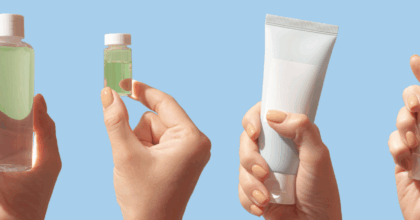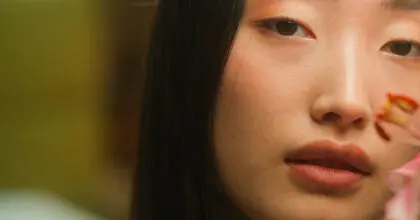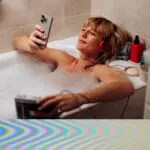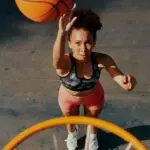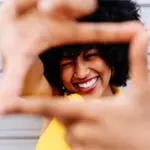What if your daily moisturizer, your clothes, or even your car could quietly protect you from UV rays? For most of us, sun protection means sunscreen—the familiar shield against burns, redness, and long-term skin damage. Yet with the sun growing stronger due to climate change, UV exposure is unavoidable, and sunscreen alone doesn’t always fit the way we live.
In the Asia-Pacific market, particularly in Thailand, we’re seeing sunscreen use on the rise, especially among beauty-conscious consumers who link it to ‘skinification’ benefits like even skin tone and anti-ageing. And it’s no longer limited to just lotions and creams. Convenient formats, like sprays, gels, and balms, are gaining popularity. Even after-sun repair products are on the rise in India. This shift shows how a beauty-led, ‘skinification’ approach is helping sunscreen become a seamless part of everyday routines.
Yet the common pain point remains: people apply sunscreen inconsistently—often heavily on the face but not the body, or only when the sun “looks strong.” This is where cross-category UV protection becomes powerful; not as a replacement for sunscreen, but to close the gap when consumers fall short. And perhaps, this is why suncare products have seen a decline in penetration in China.
Signals of the Shift: People and Product UV Protection
An interesting opportunity for brands is to reposition and communicate existing benefits rather than developing entirely new products. We’re seeing how UV protection goes beyond bottle, covering both people and product protection.
The Rise of UV Protective Clothing
Clothing can be the first line of defense. In Vietnam, Canifa offers sun protection shirts crafted from Lycra and Polyester, providing 98% skin protection with a UPF50+ rating. The demand for UV protective clothing showcases a significant trend where consumers seek functional, wearable solutions for sun safety.
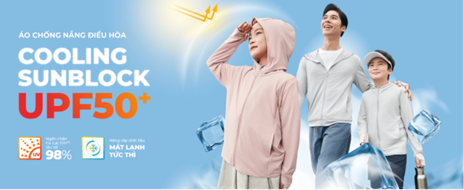
The ‘Sunification’ Revolution
Brands explore the ‘sunification’ of everyday products as seen in setting sprays and even haircare with UV filters to offer convenience and daily defense. In Thailand, 28% of facial suncare users in Thailand have used sunscreens for hair and scalp in the past six months, showing a growing interest in haircare with UV protection. Additionally, 44% of Thai facial suncare users have used foundations with SPF.
Homecare: UV Protection for Everyday Items
The concept for UV protection extends into for Home Care. Laundry detergents and softeners, such as Comfort, now claim UV protection for clothes, marketed with promises to prevent fading from sun exposure. FMCG brands can tie this messaging to a sustainability angle, as UV-protective products can extend product longevity, and clothes that don’t fade as quickly won’t need replacing as often.
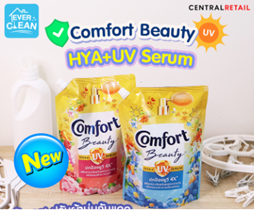

Comfort claim their laundry detergents have UV protection which they promise prevents fading.
Even patent filings reflect this trend. Daiichi Sankyo’s patented detergent formula imparts sunscreen effects to fabric. Similarly, a pending patent from Clothing Innovations Pvt Ltd for a UV-protective laundry detergent aims to prevent sunlight from breaking down other active ingredients, such as insect repellent. While still niche, these examples suggest a future where UV protection is a seamless part of our daily routines, not just an addition.
Building Trust and Confidence in UV Products
While UV protection is expanding beyond traditional sunscreen, consumer awareness and adoption haven’t fully caught up. Many people remain sceptical of products claiming UV benefits. In 2021, Purito Centella Green Level Unscented Sun SPF50+, a popular K-beauty sunscreen, was found through independent testing to have an actual SPF of only 19, far below its labelled SPF 50+. This revelation triggered widespread consumer distrust, especially toward Korean and Japanese sunscreens.
Wilasinee Kaimook – Mintel APAC Consultant“The rise of “sunification”; that is, embedding SPF into makeup and skincare, has blurred category lines, but also led to confusion and doubt about whether these hybrid products offer real protection.”
To overcome this skepticism, brands will need to invest in transparency and education. This includes rigorous and independent testing and clear communication. There are useful examples to learn from. In Australia, sunscreen brands like Ultra Viollette and Naked Sundays have recalled and refunded consumers after tests revealed lower UV protection than claimed, setting a precedent for accountability.
Next Wave of Opportunities in the UV Protection Market
The future of UV protection may not look like a bottle of lotion at all. It could be an ecosystem of invisible shields woven into our clothes, homes, and daily routines. The next wave of innovation will focus on designing protection that fits seamlessly into everyday life, providing safety that consumers might not even notice.
UV protection doesn’t have to stay in a bottle. The question for brands is: Are you bold enough to let it live everywhere else?
For those that are ready to explore this opportunity, or anything else in the Beauty and Personal market, Mintel Consulting is here to guide the way. We’ll help you digest the data and apply customised insights to your specific growth goals. Turn your vision into actionable innovation strategies. Book a consultant strategy session today!












